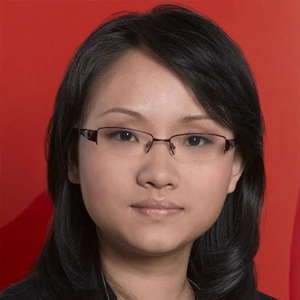Taiwan faces growing competition in manufacturing, and relations with Beijing are strained; yet its savvy citizens may benefit from political and economic flux worldwide.

On a balmy Friday at Taipei’s Ningxia night market, the number of buses packed with mainland-Chinese tourists has noticeably abated. From 2015 to 2016, mainland visitors declined by almost 800,000 persons, hampering Taiwan’s service sector. Relations with Beijing have been strained since Taiwan’s election of Tsai Ing-wen as president last May.
Beyond cross-straits tension, other factors are hampering the world’s 22nd-largest economy. Technological disruption, stagnant wages and aging demographics are altering Taiwan’s economic composition and chipping away at its growth. The citizens of this tiny yet vigorous island, in carving a new path forward, are reaching out anew to Asia-Pacific trading partners and seeking to expand beyond manufacturing to build strength in more innovative sectors and dynamic industries.
Roughly half of Taiwan’s economy is dependent on exports of electronics such as laptops, semiconductors, LCD and LED flat panels, and other components; but that sector is losing its edge. Year-over-year, Taiwan’s 2016 exports dropped by $5 billion to $280 billion. Taiwan dominates more than four-fifths of the global notebook-computer market, according to Michael McManus, managing editor of the Taiwanese publication DIGITIMES, which monitors the IT industry. But that market shrank considerably as consumers gravitated toward smartphones. Six years ago, 200 million notebook units were shipped globally. Today, fewer than 150 million are.
Unlike notebook manufacturing, which requires capital and scale, “for smartphones, you don’t need those huge factories,” McManus says. With fewer barriers to entry, much smartphone manufacturing has moved to other, cheaper countries. “China’s tech suppliers—smartphone producers, for example—have become more and more mature in terms of their technology and the products developed,” says DBS economist Tieying Ma. Additionally, the fortunes of many Taiwanese smartphone manufacturers, including Chunghwa Telecom, Hon Hai/Foxconn Technology Group and TSMC, are linked to the iPhone, which has lost global market share.
With the competitive moat around lower-end electronics manufacturing eroding, “it’s very important for Taiwanese electronics producers to move further up the value chain,” says Ma. Taiwan’s government leaders and businesses are working to produce more higher-end electronics and value-add services, with some success. Since the second half of 2016, Ma says, export, industrial production and GDP data have improved. “This year, based on the leading indicators, it seems like the economy will remain on the recovery track,” she says.
HEADING SOUTH
To increase economic stability, Taiwan’s leaders aim to reduce dependence on mainland China. An estimated two million Taiwanese live in China, and almost 30% by value of the island’s exports land there. As tension builds with the mainland, officials are strengthening relations with other Asia-Pacific countries.
In 2016, after Taiwan elected independence-leaning Tsai as president, formal diplomatic ties between Taiwan and mainland China were severed. Consequently, late last year Tsai launched Taiwan’s New Southbound policy to foster cultural and economic partnerships and understanding between Taiwan and 18 regional countries including Indonesia, Singapore, the Philippines, Vietnam, New Zealand and Australia. Taiwan has budgeted $131 million to boost tourism, open trade offices and increase talent exchanges with other regional nations in 2017.
To encourage Taiwanese companies to establish operations in other Asian markets, Taiwan’s Financial Supervisory Commission is offering consulting, capital support, financial guarantees and insurance. With $456.9 billion in foreign reserves, equal to 81.5% of its GDP and the fifth in the world, Taiwan can support these policies.

Historically, many Taiwanese companies operated in foreign markets solely because they offered the lowest-cost manufacturing. McManus says Taiwan’s government wants to develop more “value-added relationships on both sides—having more cultural exchanges, more student exchanges.”
“In the past five years, Taiwanese companies have been relocating investment away from China to Southeast Asia,” Ma says. “We could see more companies coming to South Asia to invest over the coming decade.” Investing in and developing partnerships with parties in other Asian countries will boost Taiwan’s economy in areas such as tourism and exports.
Taiwan’s leaders also want to foster start-ups, creating an “Asian Silicon Valley.,” pivoting the economy from hardware manufacturing to more software, services, Cloud computing, Big Data, green tech, biotech and artificial-intelligence sectors. “The primary objective of the new model is to reshape Taiwan’s economic competitiveness by shifting from an efficiency-driven model to an innovation-driven one,” Tsai said in a 2015 speech. “It is also aimed at striking a balance between economic growth and social need.”
McManus already sees Taiwanese companies moving beyond the low-cost manufacturing model. “People are trying to move up the market,” he says, “do more design; have more of their own IT; move into areas that aren’t just simply manufacturing, but have a lot more value added.”
He adds that Taiwanese manufacturers have successfully moved upmarket with servers and could benefit from the gravitation toward the Internet of Things. “All of this information—it needs to be stored. It needs to be processed. It needs to be analyzed,” he says. “[The Taiwanese] are doing very well in the server industry.” Taiwanese companies in the server space include Compal Electronics, Inventec, MiTAC, Pegatron, Quanta Computer and Wistron Group. “The only way to move upmarket is not to offer hardware only, but to offer solutions,” he notes.
Ma would like to see the government take additional measures to trim regulations that are stifling small companies and new industries. She also notes troublesome demographics. Taiwan’s unemployment rate is a low 3.8%; but its population is aging faster than those of many of its neighbors. An aging population hampers certain industries, such as insurance, that will face ballooning liabilities; while it boosts others, such as biotechnology, healthcare and elder care. On balance, however, aging populations tend to have negative economic impacts. “GDP growth is going to slow down because of the reduction in the supply of labor inputs,” Ma predicts.
Owing to limited confidence in the economy, Ma says, corporations have kept wages low for a decade. Thus, “many of the young generation also don’t have confidence about the domestic outlook,” she says. Low incomes make real estate unaffordable for many people, and with the median real estate price-to-income ratio as high as 15 in certain cities, “There is some worry that there is a property bubble, especially in Taipei,” Ma says.
“Short term, I’m holding a positive view because of the recovering global economy,” says Ma, although she is more cautious about the longer term. “When the global cycle is going up, usually we can see Taiwan improve.” She is forecasting 2.1% GDP growth in 2017, slightly above consensus estimates.
McManus is optimistic about Taiwan’s ability to thrive over three to five years. It has “a very educated population that wants to engage with the world. And they look for opportunities not just for themselves, but for their partners,” he says.
McManus says increased global protectionism could, counterintuitively, be an opportunity for Taiwan. With more countries looking to produce goods within their own borders, the Taiwanese can export manufacturing know-how as opposed to products. “Taiwan may be able to export its manufacturing expertise worldwide,” he says. “Taiwan will find a role wherever the world goes and in whatever direction it goes.”



